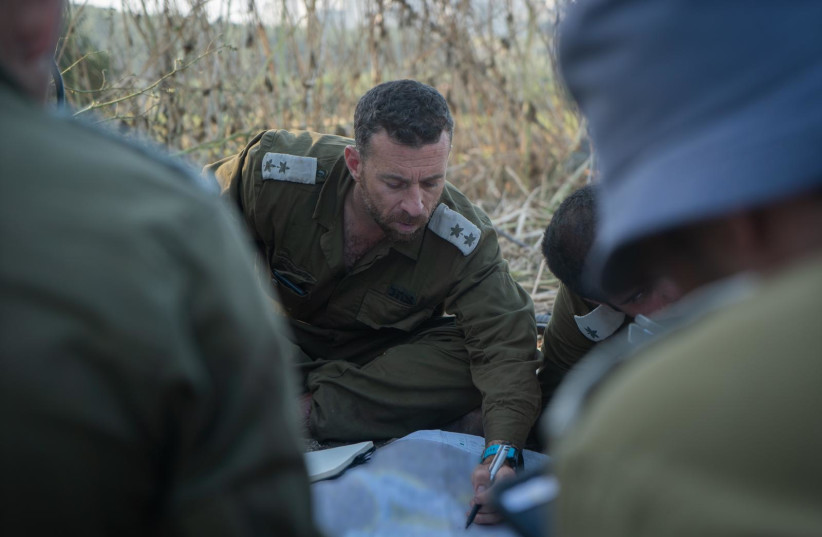More than three months into the war between Ukraine and Russia, the IDF continues to learn from the conflict that has claimed the lives of thousands of civilians and soldiers.
While at first it seemed that Russia would quickly overpower Ukraine, which had significantly fewer weapons and manpower, Kyiv has been able to hold off invading forces and even push them back in key locations.
The IDF set up teams in March to gather information and intelligence for the Israeli military in the fields of combat methods and doctrine, ground maneuvers, logistics, air defense and intelligence, as well as anti-tank, cyber, electronic and psychological warfare and more.
According to the military, the teams are also studying the use of social media and fake news and how they affect the war and international opinion.
The military is currently in the middle of its month-long war games dubbed Chariots of Fire, which simulates a prolonged and intense war along all of Israel’s borders. Thousands of soldiers and reservists are taking part in the drill in which they go up against Hamas and Hezbollah, including massive rocket fire on the home front.


Chariots of Fire drill
While the drill is mimicking war against terrorist armies from Lebanon and the Gaza Strip, and not a war against a state like Russia, the IDF has incorporated several lessons they’ve learned from the war.
The Russian military doctrine, one that is centralized and rigid, has been studied in depth by the Israeli military over the years and especially during the current conflict.
Hezbollah, which has worked almost side-by-side with Russian forces in Syria during the country’s ongoing civil war, has incorporated the Russian doctrine for its forces.
Though Hezbollah was able to learn from the Russians – including planning and designing operations as well as integrating more advanced capabilities into its doctrine – the IDF does not think that will greatly change the balance between the two forces.
According to the military, strict military plans are easy to beat, therefore giving the IDF the upper hand on Hezbollah including its elite Radwan unit, which is expected to infiltrate into Israel for high-signature operations.Another issue that the IDF has integrated into the drill from the war in Ukraine is how to destroy enemy targets before ground troops enter populated areas.
The IDF claims to have thousands of targets in the densely populated Gaza Strip as well as along the northern front, including hundreds in Beirut. But with military infrastructure integrated inside urban civilian centers, the IDF will have to use precision munitions against targets.
According to the military, its target bank in the Northern Command is 20 times larger than the target bank the military had in 2006, with thousands of targets ready to be attacked including headquarters, strategic assets and weapons storehouses.
During the drill, forces will practice improving the effectiveness of producing targets in real time and making them accessible to troops on the front lines who need targeted intelligence for powerful and lethal ground maneuvers.
The IDF has also learned from the chaos surrounding the logistics that allowed Ukraine’s military to destroy thousands of Russian tanks and platforms.
During the three-plus months of war, Russian troops have faced dozens of critical issues regarding logistics, including not having enough food, water or gas, leading soldiers to steal from Ukrainian civilians and in some cases defect.
The Israeli military has faced logistics problems during several wars. During the Second Lebanon War in 2006, for example, the military had difficulty getting supplies to troops on the ground. During the 2012 Operation Pillar of Defense against terrorist groups in the Gaza Strip, reservists and troops complained of food shortages.
By learning from Russia’s mistakes in Ukraine, the IDF’s Logistics Corps is playing a key role during the month-long drill on several scenarios with troops from the various logistics units, police, medical personnel and engineering forces.
In the event of a multi-front, full-scale war that will see ground maneuvering in Israel’s North and South, the IDF would need to flood highways across the country with convoys of armored vehicles, tanks and more.
In addition to protecting these military convoys from riots inside Israel, the Logistics Corps will also practice avoiding issues such as heavy traffic and rocket strikes by constructing bypass roads for transporters and other platforms.
According to the military, while there continue to be gaps in issues related to logistics, including relying on the civilian market for rentals, the IDF says it is in the midst of a large-scale procurement program for new transporters.